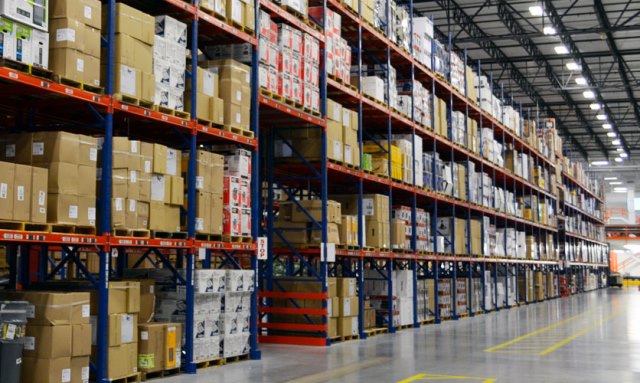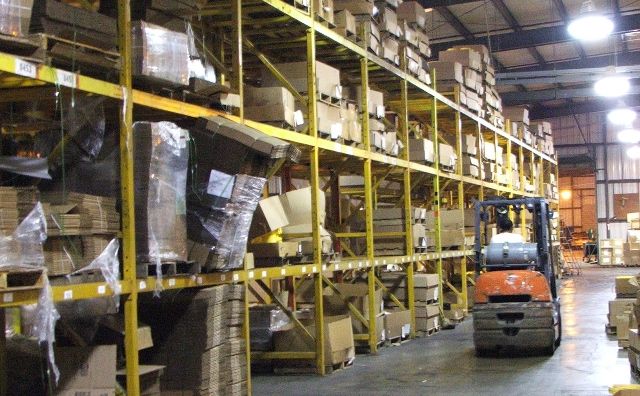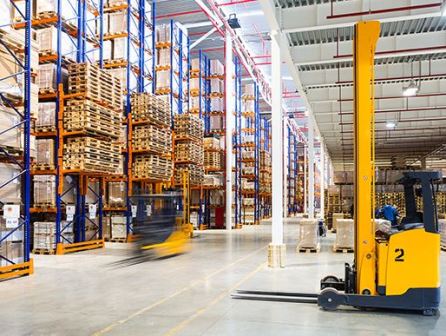Do you know pallet racking inspection requirements?
- Are racking inspections a legal requirement?
- When do warehouse storage racks need an inspection?
- When was the last time you had your warehouse and storage racks independently inspected for integrity and safety?
- Would any of your supervisors or line managers respond, “What do I mean “independent” inspections?
Or — of greater concern — would they scratch their heads and ask “What do you mean rack inspection?”
Few warehouse operators have aggressive in-house rack inspection programs in place. Forklift accidents, collisions, dropped or misplaced loads, and other incidents that result in rack damage may or may not get promptly reported.
But even when a forklift hitting the front end corner of a rack gets reported, a typical management response never goes beyond “let’s go take a look,” as if a quick visual inspection alone will confirm that load limits and structural integrity of the rack have not been affected by the accident.
It’s as if, while other hazards “stand out” to otherwise reasonable and prudent supervisors, there often is an absolute lapse in concern for 100,000 pounds of rack and product collapsing in a pile across the tight confines of a busy warehouse.

Warehouse racking inspection requirements
Why do i need a racking inspection for pallet racking?
Racking is often installed based on its versatility, reliability, and capability to support large loads – making it easy to fall into the trap of thinking that it requires minimal maintenance.
While racking should certainly last for a long time and be resistant to damage, it’s also important to keep assessing its condition so that you know when something is amiss.
While you shouldn’t leave all of your safety oversight to racking inspectors, regular inspections are an important element of health & safety compliance, as well as a means to protect people in the workplace.
Industrial storage racks manufacturers
Manufacturing and warehousing racking environments create severity exposures that are typically overlooked or not considered by material handlers and employees working around storage racking systems.
With forklifts maneuvering back and forth and constantly lifting and lowering heavy loads co-workers don’t realize that pallets do fail and quite often operators make judgment errors that result in falling materials.
When that happens, it is conceivable that racks will fall over crushing workers and materials do fall from forklift forks striking and seriously injuring workers.

OSHA storage rack anchor requirements
To avoid these pitfalls, racking systems should be inspected at least monthly to make sure the racks are in compliance with OSHA standards and they have been safely and properly installed, loaded, and without damage.
While OSHA does not have a standard racking guideline, they do site the general clause which states employers shall provide a workplace that is free from recognized hazards.
Whether your racks are damaged or installed improperly they can create a workplace hazard that can be found in violation of the regulation and result in a fine/citation.
Fines typically result from damaged or smashed racking, non-engineered repairs or modifications, unposted weight capacities, and racks not being anchored to the floor.
Storage rack solutions
- What does it mean if my rack is ‘out-of-plumb’?
- How about ‘out-of-straight’?
- ‘Out-of-plumb’ means your rack is not exactly vertical – it’s leaning forwards, backward, to one side, or the weight of its contents is causing it to buckle in or out.
- ‘Out-of-straight’ means your rack is not level from side to side – one side is higher than the other. If you place a marble on an out-of-straight shelf, it’ll roll to one side. A rack that is out-of-plumb is frequently also out-of-straight.
The out-of-plumb and out-of-straight limits for a loaded rack are the same: 0.5 inches per 10 feet of height. If your rack exceeds these limits, the rack should be safely unloaded and re-plumbed.
I have a sprinkler system installed in my warehouse. Will racking interfere with my fire protection?
OSHA mandates a minimum vertical clearance of 18 inches be maintained between sprinklers and any material below. You must also ensure that sprinkler spacing provides a maximum area of protection per sprinkler and that interference of the water discharge pattern due to structural components and building contents is minimized.
If you have already installed a sprinkler system, you’ll need to add your racks in such a manner that they don’t block the sprinklers. Other fire hazards may come into being with a new racking installation, including new fire exit strategies, reduced exit visibility, and increased proximity of racked material to lights and heating elements on the ceiling. Be sure to retrain employees as needed, especially if you are installing multiple new racks.

Warehouse Racking Design
The efficient, safe design and use of pallet racking storage systems, pallets and materials handling equipment depend on a number of factors. This guide is intended to give an indication of best practice and advice to anyone involved in the planning of a new warehouse or storage facility.

Pallet Rack Inspection checklist
Few warehouse operators have aggressive in-house rack inspection programs in place. Forklift accidents, collisions, dropped or misplaced loads, and other incidents that result in rack damage may or may not get promptly reported.
